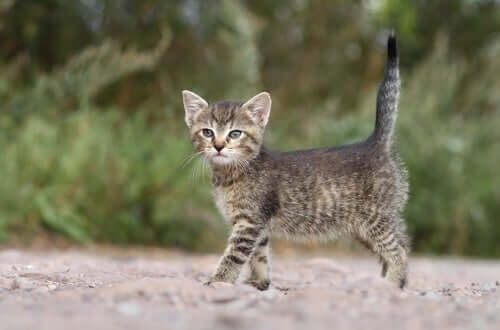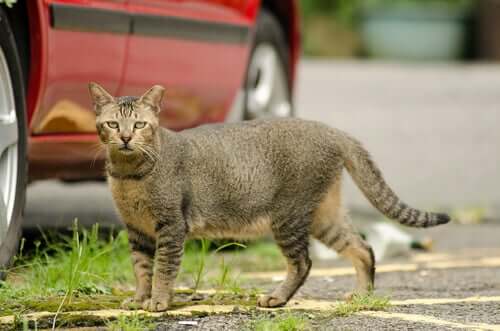How The Position of Your Cat's Tail is Expressive

Contrary to what many people believe, cats are very expressive animals. Anyone who has ever lived with a cat, as people have for centuries, know that when a cat wants to tell you something, it will let you know in a clear way. So, what can the position of your cat’s tail tell you?
Beyond the sounds your cat makes, which already have their wide range of tonalities and meanings, cats also use their entire body to communicate with each other and with humans. They also use it to communicate with other animals that are different from them.
If there’s one part of the cat that seems to have a lot to say, it’s the tail. Designed as an extension of the spine, the tail is vital for balance.
It’s also important for all the acrobatic jumps and aerodynamic falls that cats are able to perform.
The position of your cat’s tail and what it means
According to animal behavior specialists, there are up to 12 positions of your cat’s tail, each with a unique meaning.
Tail up
This is a sign of high levels of happiness and well-being. Some cats even run out to meet their owners as they come home from work with their tail fully extended.
Other cats may walk slowly, but resolutely, keeping their tail erect. This indicates tranquility and trust. If they want to be noticed, they might come up to your feet and rub their heads against you.
If your cat still isn’t receiving the attention she’s looking for, she may stand up against you on two legs. There are cats who are trained to only do this when the person is wearing long pants since they can accidentally scratch you. And if they still don’t get what they’re looking for, they’ll get up on the bed, sit on your computer keyboard, or place themselves in front of the TV. Whatever they can do to make sure it’s all about them!
Tail vertical and straight, but with an inclination near the tip
Among the positions of the tail, this is the way that cats express curiosity about something. It’s common to see their tail in this position. It’s normal for them to spend time each day exploring and carefully going through the entire house or area where they live.
Low position
This is another common tail position. It can imply submission to other cats or people. This is typical to see, for instance, at the vet or when you have to give them medicine.
A low tail position can also signify sadness or depression. If you see this position frequently and without a reason, it could be that your cat is feeling a little down.
Fast tail movements
In dogs, rapid tail movements mean happiness and joy. However, this is the complete opposite in cats. When the position of your cat’s tail is moving rapidly from side to side, like a whip, the animal is externalizing anger. The faster and stronger the movements, the greater the anger.
Subtle movements
If your cat’s tail is moving just a bit, it means that your cat is focused on something. Some animals will also have smooth, calm tail movements when they are cuddling their owners and show their contentment with a slow, swinging tail.

These movements, combined with purring, convey that your cat is happy and relaxed. When they are hunting, though, they will keep their eyes fixed on a target while their tail is barely moving.
Tail between their legs
This is another position of your cat’s tail that can show dislike or fear. It’s very common to see them in this position when they have been caught misbehaving or after doing something they know they’re not supposed to.
There are cases of cats that, although you haven’t figured out what they did yet, can’t hide their guilt. If you see the position of your cat’s tail like this, go for a quick look around the house to figure out what he did!
Inflated tail
This happens for two reasons: either your cat is terrified or he is very angry. In the first case, your cat’s tail will be very close to the ground. If they are upset, their tail will be higher.
If your cat is feeling very stressed, they will also show their teeth while making audible grunts. We can also see their anger when they start to show their claws as well.
